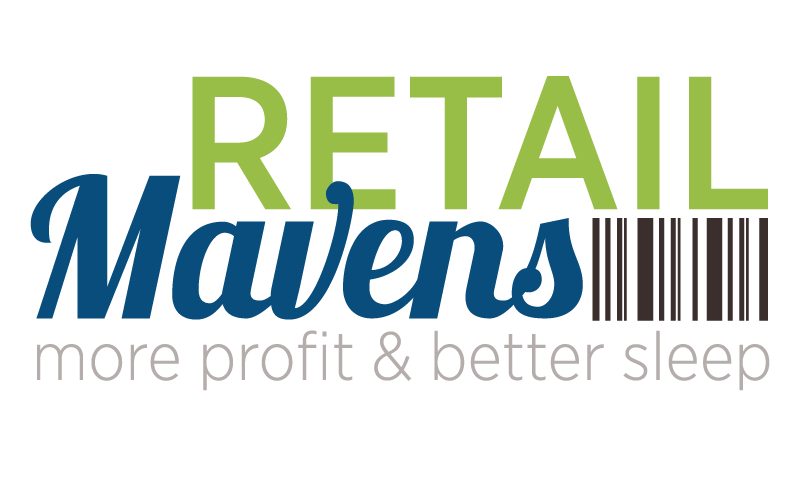No word is more important to retailers than Margins. It is crucial to building a profitable business. However, this most critical term is also the most misunderstood.
What is Gross Margin?
Margin refers to the retail term Maintained Markup (MMU) which is the same as the general accounting term Gross Margin. It is the difference between sales and cost of goods sold and is always discussed as a percentage.

Gross margin measures how much of every sales dollar a store keeps to pay for everything other than inventory.
For example, if Caitlin’s store has a 48% gross margin, that means that out of every $100 of merchandise bought in his store, $52 goes to pay for the inventory and $48 goes to pay for everything else.
This equation is the math that makes retailers money. To build a more profitable business, a retailer must increase gross margin.
What Increases Gross Margin?
The best strategy to increase gross margin is to increase initial markup when pricing items.
Initial markup (IMU) measures the amount of potential profit in the retail price of inventory. It is the difference between what an item costs from the vendor and what the retail price is that consumers pay. It is always discussed as a percentage.
Initial MarkUp % = [(Retail Price – Cost)/Retail Price] x 100
Consider two stores that are doing the same sales volume of $400,000 and taking the same percentage of annual markdowns.
Clare uses a 50% initial markup, which means that she takes a ball with a $10 cost and marks it up to $20. Not everything sells at full price, so the amount of gross margin that remains after considering markdowns is 37.5 percent. Think of it this way. For every $100 that she brings in, $37.50 goes towards paying for everything else and $62.50 goes to pay for her inventory.
Brooke has set her initial markup at 55 percent. She prices that same $10 ball at $22 retail. After markdowns, her gross margin is 43 percent. For every $100 that she brings in, $43 goes towards paying for everything else and $57 goes to pay for her inventory.
Let’s look at that again.
They both make $400,000 sales in a year.
They have the same markdown percentage for the year.
Clare’s gross margin is 37.5%. Brooke’s gross margin is 43%
For every $100 that Clare sells, after paying for her inventory she puts $37.50 in the bank.
For every $100 that Brooke sells, after paying for her inventory she puts $43 in the bank.
For every $100 that Brooke sells, after paying for her inventory she puts $5.50 more in her bank than Clare does.
Brooke’s gross margin is 5.5% higher because her initial markup is higher.
The dollar impact of a higher gross margin is determined by multiplying the sales by the gross margin percentage difference.
$400,000 x 5.5% = $22,000
At the end of the year, Brooke has an extra $22,000 in her bank account.
Brooke banked that additional $22,000 because she followed the strategy of increasing her initial markup so that the average markup of her entire store is 55 percent. The key here is that it is the AVERAGE initial markup. Some items have their retail price determined by manufacturers. Other items are marked up higher. Brooke has set a goal that every month she reviews the cost and retail of the inventory she has brought in so that the total of all reaches a 55 percent initial mark up.
An easy way to increase your profitability is to increase your gross margin by increasing your initial mark up.
The shortcut to increasing initial markup is to look for items where the cost can be multiplied 3 or 4 times. This action creates an IMU of 66 to 75 percent. The risk is minimal because even when marked down there is still so much gross margin available.

